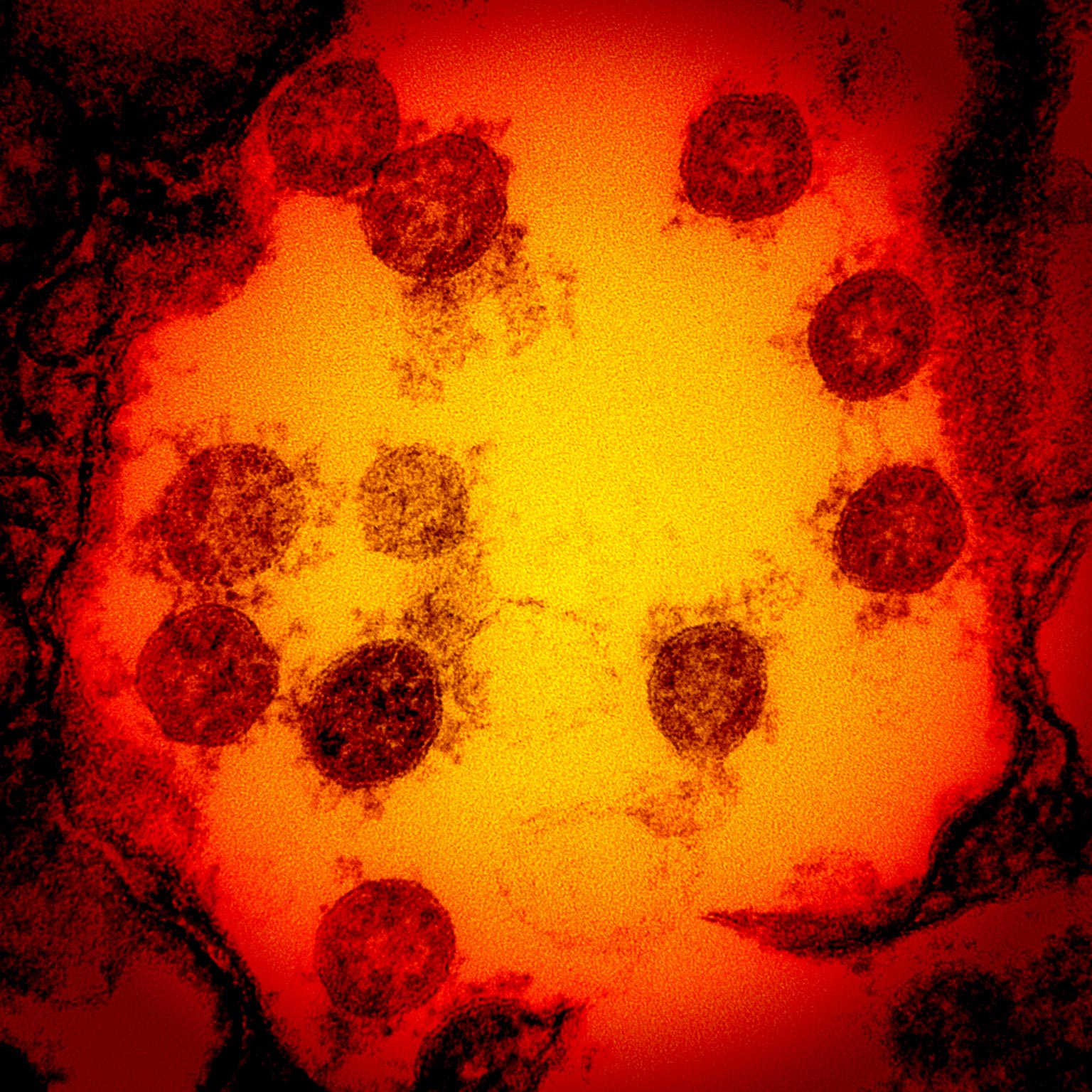Transmission electron micrograph of SARS-CoV-2 virus particles isolated from a patient. The image was captured and color enhanced at the NIAID Integrated Research Facility (IRF) in Fort Detrick, Maryland. Image Credit: NIAID
A study of a gateway receptor for SARS-CoV-2 Under the direction of Walter J. Lukiw, PhD, Professor of Neuroscience, Neurology, and Ophthalmology at the Neuroscience Center of Excellence and School of Medicine at LSU Health in New Orleans, this may help explain the myriad of symptoms and organs involved with SARS-CoV-2 infection and SARS-CoV-2 infection are linked COVID-19. The results suggest that multi-organ infection with SARS-CoV-2 can occur via the angiotensin converting enzyme 2 receptor (ACE2), which can be found almost anywhere in the body. The results will be published in the journal Cellular and Molecular Neurobiology.
In order to better understand the mechanism and pathways of SARS-CoV-2 infection and the susceptibility to certain cell and tissue types as well as organ systems, the research team analyzed 85 human tissues for the presence of ACE2 receptors. ACE2 is a protein found on the surface of many immune and nonimmune cell types. As an enzyme, it is part of the system that regulates blood pressure as well as the fluid and electrolyte balance. It can also help regulate cardiovascular, neurovascular, and kidney function, as well as fertility. ACE2 receptors act like barriers on cells, and the SARS-CoV-2 spike proteins act like keys that open the barriers and allow the virus to enter cells to multiply quickly. In addition to the controls, the tissues tested included lung, digestive, renal excretory, reproductive, eye tissues and 21 different regions of the brain.
“In addition to strong ACE2 expression in respiratory, digestive, kidney excretory and reproductive cells, high ACE2 expression was also found in the amygdala, cerebral cortex and brain stem,” reports Dr. Lukiw. “This can help explain cognitive deficits associated with SARS-CoV-2 infection. Some of the highest ACE2 expression levels have been found in the pons and medulla oblongata in the human brain stem, an anatomical region of the brain that contains the medullary respiratory centers, and this could in part explain the susceptibility of many CoV-19 patients to severe shortness of breath. ”
The team also found that ACE2 receptor activity could also be easily detected in the eye, suggesting that the visual system is an additional entry point for the SARS-CoV-2 invasion and that glasses or face shields are just as important under certain conditions like the face, can be masks to reduce SARS-CoV-2 transmission and infection.
“There are still some important research gaps,” concludes Lukiw. “A real danger of a SARS-CoV-2 infection is not only in its highly transmissible and contagious nature and lethality, but also in its simultaneous and multiple attack on many human cell and tissue types, on which vital and critical respiratory, immunological, Involved in vascular and renal excretions and neural systems as well as an unprecedented coordinated disruption of the complex neurophysiology, neurochemistry, neurobiology and neurology of the cells of the brain and central nervous system (CNS) that normally regulate these multiple physiological systems. ”
Reference: “SARS-CoV-2 infectivity and neurological targets in the brain” by Walter J. Lukiw, Aileen Pogue and James M. Hill, August 25, 2020, Cellular and Molecular Neurobiology.
DOI: 10.1007 / s10571-020-00947-7
The authors write to the late Dr. James M. Hill (formerly professor in the departments of microbiology, ophthalmology and pharmacology at the New Orleans School of Medicine at LSU Health), with whom they had a long-term research collaboration on the expression of the ACE2 receptors, including those found in the Alzheimer Disease brain. Aileen Pogue of Alchem Biotech Research in Toronto was also involved in the tabulation of research data, bioinformatics and statistical analysis.
The research was supported by grants from Research to Prevent Blindness (RPB); the Louisiana Biotechnology Research Network (LBRN); and NIH grants NEI EY006311, NIA AG18031, and NIA AG038834.



